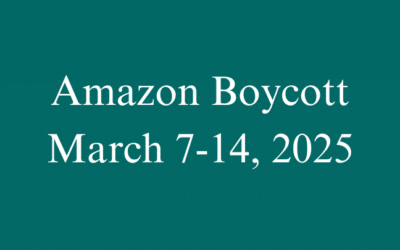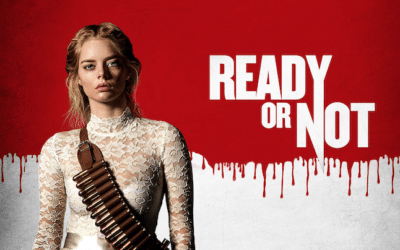So I finally watched The Purge (2013) and The Purge: Anarchy (2014), which have to be called “social science fiction action horror” because there’s so much going on in them. The first movie seems to be another home invasion story that pits a family against assailants who threaten to kill them, but James DeMonaco wrote some serious social commentary into it. The story takes place in the year 2022, at which point the United States has legalized one night a year when you can commit any crime — including murder — without consequences. All laws and emergency services are suspended from 7 a.m. to 7 p.m. (no police and no hospitals). During this annual event, called the purge, the wealthy protect themselves with state-of-the-art weaponry and security barriers and the un-wealthy do their best to lock themselves in and hope they make it through the night.
The initial movie only sketches out what it must be like to live through this night, showing the experience of one family. The second movie, which takes place in 2023, gives us a fuller picture of what it’s like during those annual 12 hours: assailants with ghoulish masks and face paint slaughter people in the street, kidnappers deliver the disadvantaged to wealthy families who want to purge in the privacy of their homes, armed individuals set out on private missions to settle scores, and anyone stuck outside (sometimes driven from their homes) has to survive by wits and luck until the ending horn sounds at 7:00 a.m.
That’s all interesting in its violent, action-packed way, but what I find more interesting is the social commentary behind it. In The Purge: Anarchy we find out that since the purge was ratified in 2017 (it’s part of the 28th amendment), unemployment and crime are down. The New Founding Fathers of America (NFFA) say the purge gives people a chance to cleanse themselves of their worst tendencies so that the rest of the year they can live in peace. The NFFA state that the economy is improving and the country is more peaceful because of this new tradition.
 |
| Zoë Soul, Carmen Ejogo in The Purge: Anarchy |
But in this twisted dystopia, other Americans point out that in the five years since the purge started, the numbers of working class, homeless, etc. have decreased because the rich use the purge to slaughter the poor. In The Purge: Anarchy we see the emergence of a political, grassroots opposition led by a Black character named Carmelo. He leads an armed movement during the 2023 purge and urges his peers to join him in fighting back.
The Purge was prescient in its anticipation of an American population that’s ready to do what it takes to get rid of “unwanted” elements. As we’ve seen since Donald Trump declared his candidacy for the presidency, many Americans have been waiting to unleash their bigotry, fear and violence towards people of color. It startled me to see that in The Purge: Anarchy, the Founding Father who’s shown giving a speech on TV is named Donald Talbot. The movie came out in July 2014. How did DeMonaco know?
But as much as DeMonaco gets right about political dynamics, he gets a lot wrong about economic dynamics. As I posted recently, when Alabama passed harsh laws in 2011 that caused large numbers of immigrants to leave the state, Alabama lost so much of its working population that its businesses lost millions of dollars. Simply eliminating the poor doesn’t result in better employment rates and an improved economy. If everyone who earns less than $10 an hour dropped dead right now, who the hell would pick the fruit, bus the tables, drive the cabs, give the pedicures, watch the children and clean the toilets? We saw in Alabama that unemployed, American-born citizens do not flow right into underpaid, labor-intensive jobs even when they’re vacated. Alabama’s failed experiment did not improve its employment rate or economy at all.
DeMonaco’s Purge series seems to criticize a country where the rich want to get rid of the poor, but it makes a very insidious argument: that eliminating the poor (and the homeless and the old and the sick, etc.) would improve the economy. This seems particularly irresponsible when I consider that Alabama’s cautionary tale was well underway by 2012, the year DeMonaco would have been creating his fantasy world where getting rid of the poorest members means an economy improves.
 |
| Promotion for the third movie. |
I can only hope that The Purge: Election Year (out 1 July 2016) shows us that the NFFA’s stories of the economy improving have been false. That’s the only way DeMonaco can correct his misguided dystopic vision and back away from the idea that killing those who earn the least will result in more prosperity for all. In the second film, one character describes the purge as having resulted in the redistribution of wealth upwards. What? Our country’s wealth has already redistributed upwards. You could kill off all of us who earn less than $20,000 a year and it wouldn’t make much difference at all to those at the top. The storylines of The Purge movies seem pro-working class on the surface, but they’re supported by a dangerous theory. Come on, DeMonaco. Show us in The Purge: Election Year that the purge hasn’t really been about economic wealth. Maybe it’s really been about racial purity or good old eugenics, but it can’t be about money. The math just doesn’t work.




0 Comments